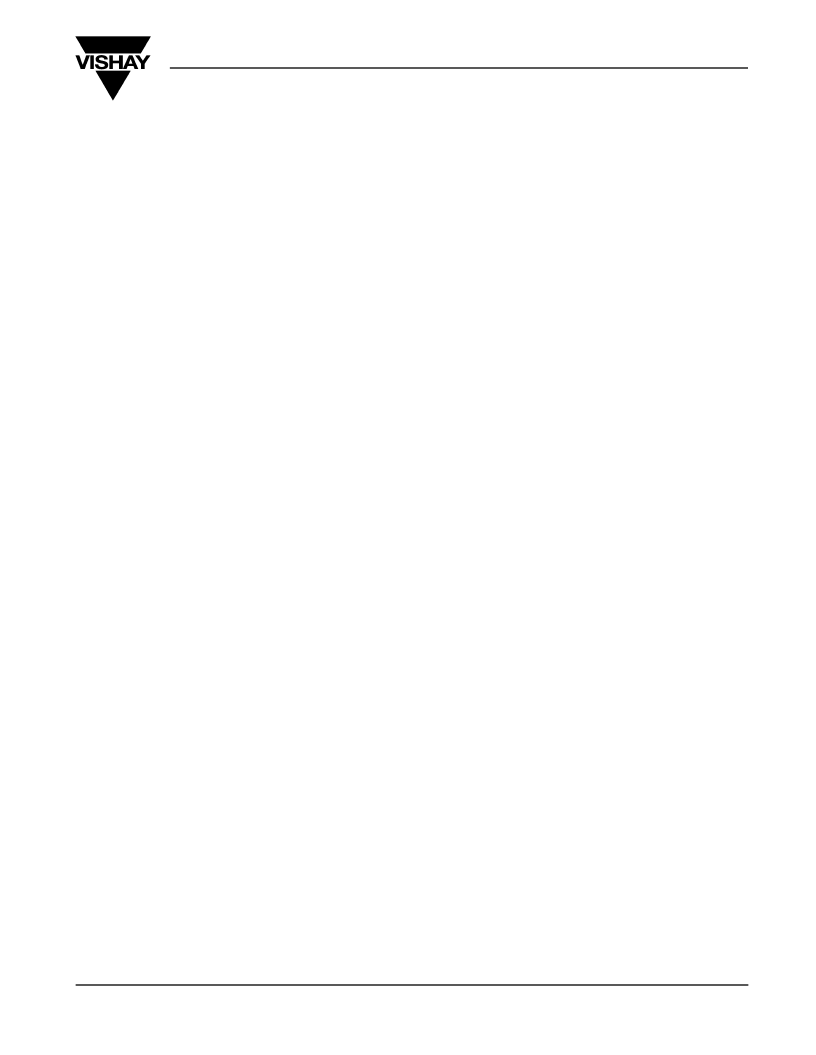- 您現(xiàn)在的位置:買賣IC網 > PDF目錄368619 > Si786 (Vishay Intertechnology,Inc.) Dual-Output Power-Supply Controller(用于便攜電腦電源轉換的雙輸出步降轉換器) PDF資料下載
參數(shù)資料
| 型號: | Si786 |
| 廠商: | Vishay Intertechnology,Inc. |
| 英文描述: | Dual-Output Power-Supply Controller(用于便攜電腦電源轉換的雙輸出步降轉換器) |
| 中文描述: | 雙輸出電源控制器(用于便攜電腦電源轉換的雙輸出步降轉換器) |
| 文件頁數(shù): | 13/13頁 |
| 文件大小: | 497K |
| 代理商: | SI786 |

Si786
Vishay Siliconix
FaxBack 408-970-5600, request 70189
www.siliconix.com
S-60752—Rev. G, 05-Apr-99
13
DESIGN CONSIDERATIONS
Inductor Design
Three specifications are required for inductor design:
inductance (L), peak inductor current (I
LPEAK
), and coil
resistance (R
L
). The equation for computing inductance is:
Where:
V
OUT
V
IN(MAX)
f
I
OUT
LIR
= Output voltage (3.3 V or 5 V);
= Maximum input voltage (V);
= Switching frequency, normally 300 kHz;
= Maximum dc load current (A);
= Ratio of inductor peak-to-peak ac current to
average dc load current, typically 0.3.
When LIR is higher, smaller inductance values are
acceptable, at the expense of increased ripple and higher
losses.
The peak inductor current (I
LPEAK
) is equal to the steady-state
load current (I
OUT
) plus one half of the peak-to-peak ac
current (I
LPP
). Typically, a designer will select the ac inductor
current to be 30% of the steady-state current, which gives
I
LPEAK
equal to 1.15 times I
OUT
.
The equation for computing peak inductor current is:
OUTPUT CAPACITORS
The output capacitors determine loop stability and ripple
voltage at the output. In order to maintain stability, minimum
capacitance and maximum ESR requirements must be met
according to the following equations:
and,
Where:
C
F
V
REF
V
OUT
R
CS
GBWP = Gain-bandwidth product, 60 kHz;
ESR
CF
= Output filter capacitor ESR (
).
= Output filter capacitance (F)
= Reference voltage, 3.3 V;
= Output voltage, 3.3 V or 5 V;
= Sense resistor (
);
Both minimum capacitance and maximum ESR requirements
must be met. In order to get the low ESR, a capacitance value
of two to three times greater than the required minimum may
be necessary.
The equation for output ripple in continuous current mode is:
The equations for capacitive and resistive components of the
ripple in pulse-skipping mode are:
The total ripple, V
OUT(RPL)
, can be approximated as follows:
if
V
OUT(RPL)
(R) < 0.5 V
OUT(RPL)
(C),
then
V
OUT(RPL)
= V
OUT(RPL)
(C),
otherwise, V
OUT(RPL)
= 0.5 V
OUT(RPL)
(C) + V
OUT(RPL)
(R)
Lower Voltage Input
The application circuit shown here can be easily modified to
work with 5.5-V to 12-V input voltages. Oscillation frequency
should be set at 200 kHz and increase the output capacitance
to 660 μF on the 5-V output to maintain stable performance up
to 2 A of load current. Operation on the 3.3-V supply will not
be affected by this reduced input voltage.
L
V
IN MAX
V
OUT
V
–
)
)
)
-------------------------------------------------------------------
=
I
LPEAK
I
OUT
V
--------------------------------------------------------------------
V
IN MAX
V
–
)
)
+
=
C
F
V
2
V
OUT
(
)
R
CS
(
GBWP
(
)
-----------------------------------------------------------------------------
>
ESR
CF
V
-----------------------------------
(
R
REF
)
<
V
OUT RPL
)
I
LPP MAX
)
ESR
CF
F
)
----------------------------------------
+
×
=
V
OUT RPL
)
C
( )
4
R
CS
(
---------------------------------
4
–
)
C
F
(
)
OUT
-------------
IN
OUT
---------–
+
×
=
V
OUT RPL
)
R
( )
0.02
-----------------------------------------
(
ESR
CS
)
=
相關PDF資料 |
PDF描述 |
|---|---|
| SI7872DP | Dual N-Channel 30-V (D-S) MOSFET with Schottky Diode |
| SI7882DP | N-Channel Reduced Qg, Fast Switching MOSFET |
| Si7888DP | Dual N-Channel 30-V (D-S) MOSFET with Schottky Diode |
| SI7892DP | Dual N-Channel 30-V (D-S) MOSFET with Schottky Diode |
| Si7892DP-T1 | Dual N-Channel 30-V (D-S) MOSFET with Schottky Diode |
相關代理商/技術參數(shù) |
參數(shù)描述 |
|---|---|
| SI7860ADP | 制造商:VISHAY 制造商全稱:Vishay Siliconix 功能描述:N-Channel Reduced, Fast Switching MOSFET |
| SI7860ADP-T1-E3 | 功能描述:MOSFET 30V 16A 4.8W 9.5mohm @ 10V RoHS:否 制造商:STMicroelectronics 晶體管極性:N-Channel 汲極/源極擊穿電壓:650 V 閘/源擊穿電壓:25 V 漏極連續(xù)電流:130 A 電阻汲極/源極 RDS(導通):0.014 Ohms 配置:Single 最大工作溫度: 安裝風格:Through Hole 封裝 / 箱體:Max247 封裝:Tube |
| SI7860ADP-T1-GE3 | 功能描述:MOSFET 30V 16A 4.8W 9.5mohm @ 10V RoHS:否 制造商:STMicroelectronics 晶體管極性:N-Channel 汲極/源極擊穿電壓:650 V 閘/源擊穿電壓:25 V 漏極連續(xù)電流:130 A 電阻汲極/源極 RDS(導通):0.014 Ohms 配置:Single 最大工作溫度: 安裝風格:Through Hole 封裝 / 箱體:Max247 封裝:Tube |
| SI7860DP | 制造商:VISHAY 制造商全稱:Vishay Siliconix 功能描述:N-Channel Reduced Qg, Fast Switching MOSFET |
| SI7860DP-E3 | 功能描述:MOSFET N-Ch 30V 18A RoHS:否 制造商:STMicroelectronics 晶體管極性:N-Channel 汲極/源極擊穿電壓:650 V 閘/源擊穿電壓:25 V 漏極連續(xù)電流:130 A 電阻汲極/源極 RDS(導通):0.014 Ohms 配置:Single 最大工作溫度: 安裝風格:Through Hole 封裝 / 箱體:Max247 封裝:Tube |
發(fā)布緊急采購,3分鐘左右您將得到回復。